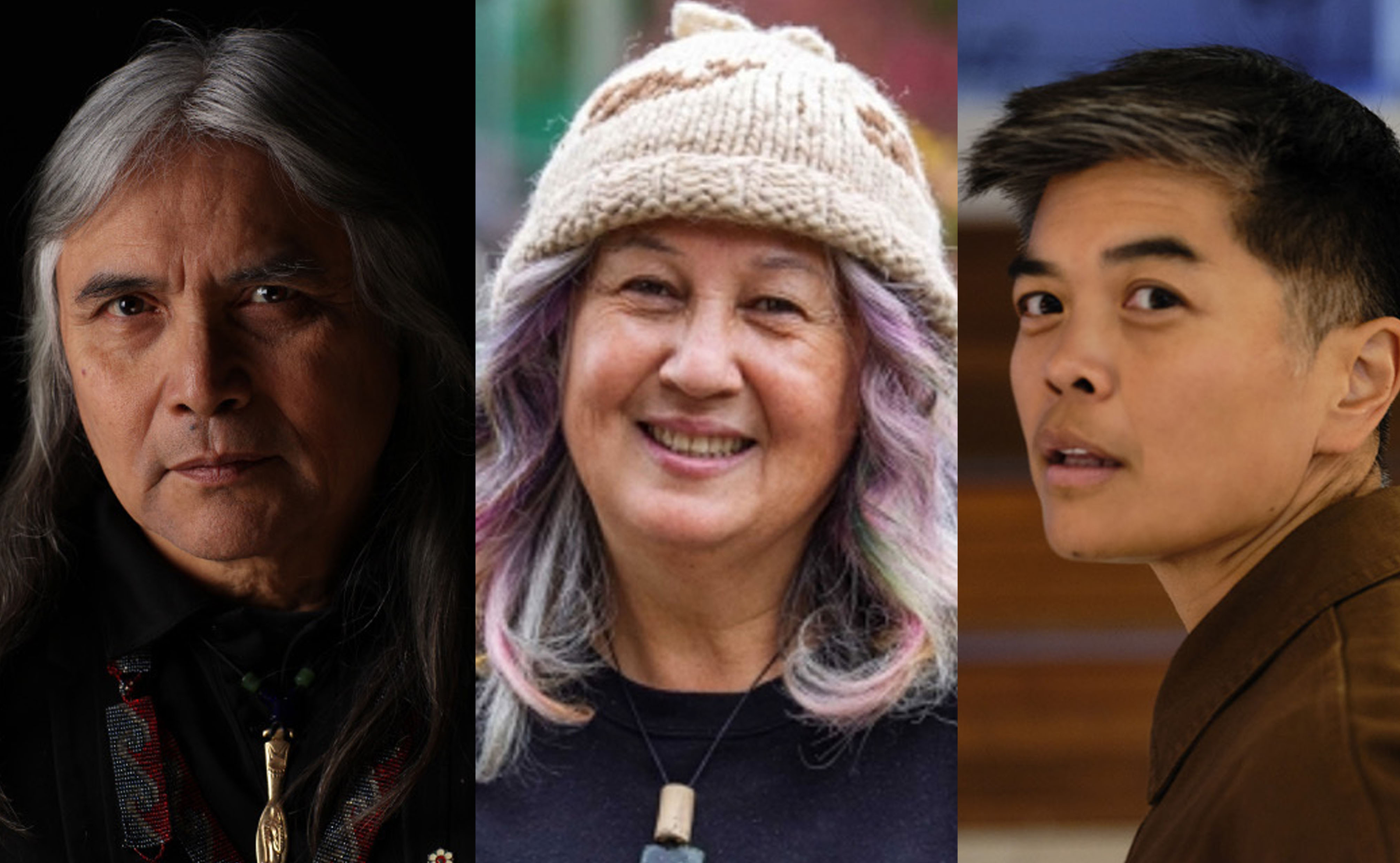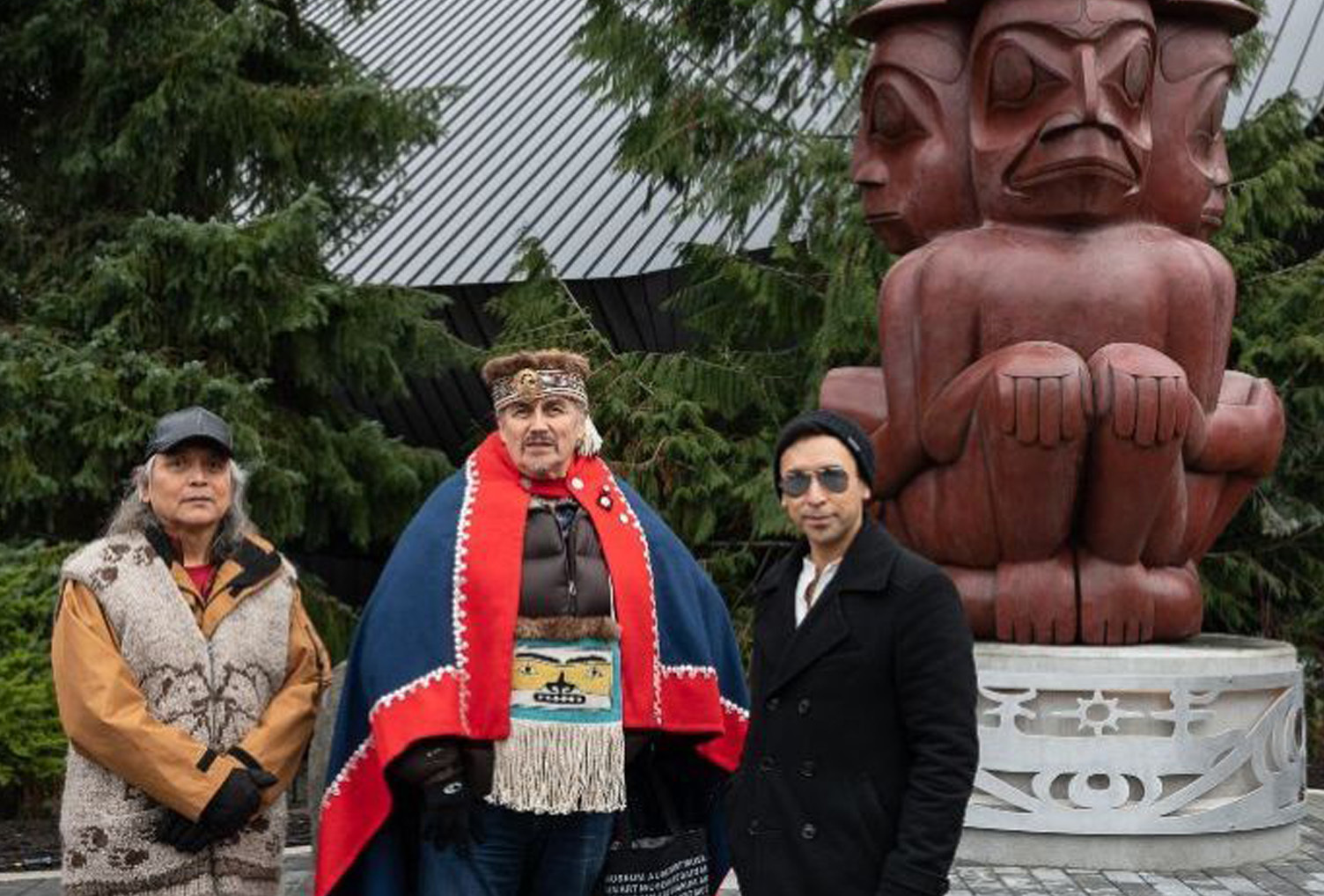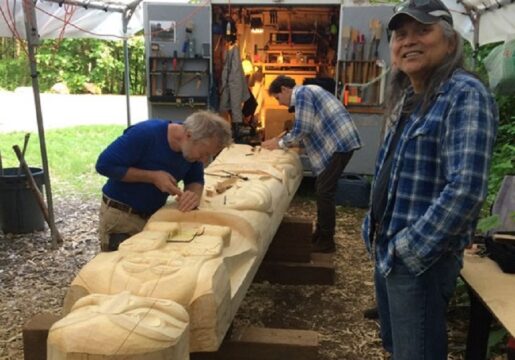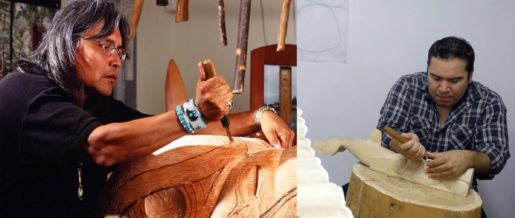House Post Carved by Xwalacktun Nears Completion
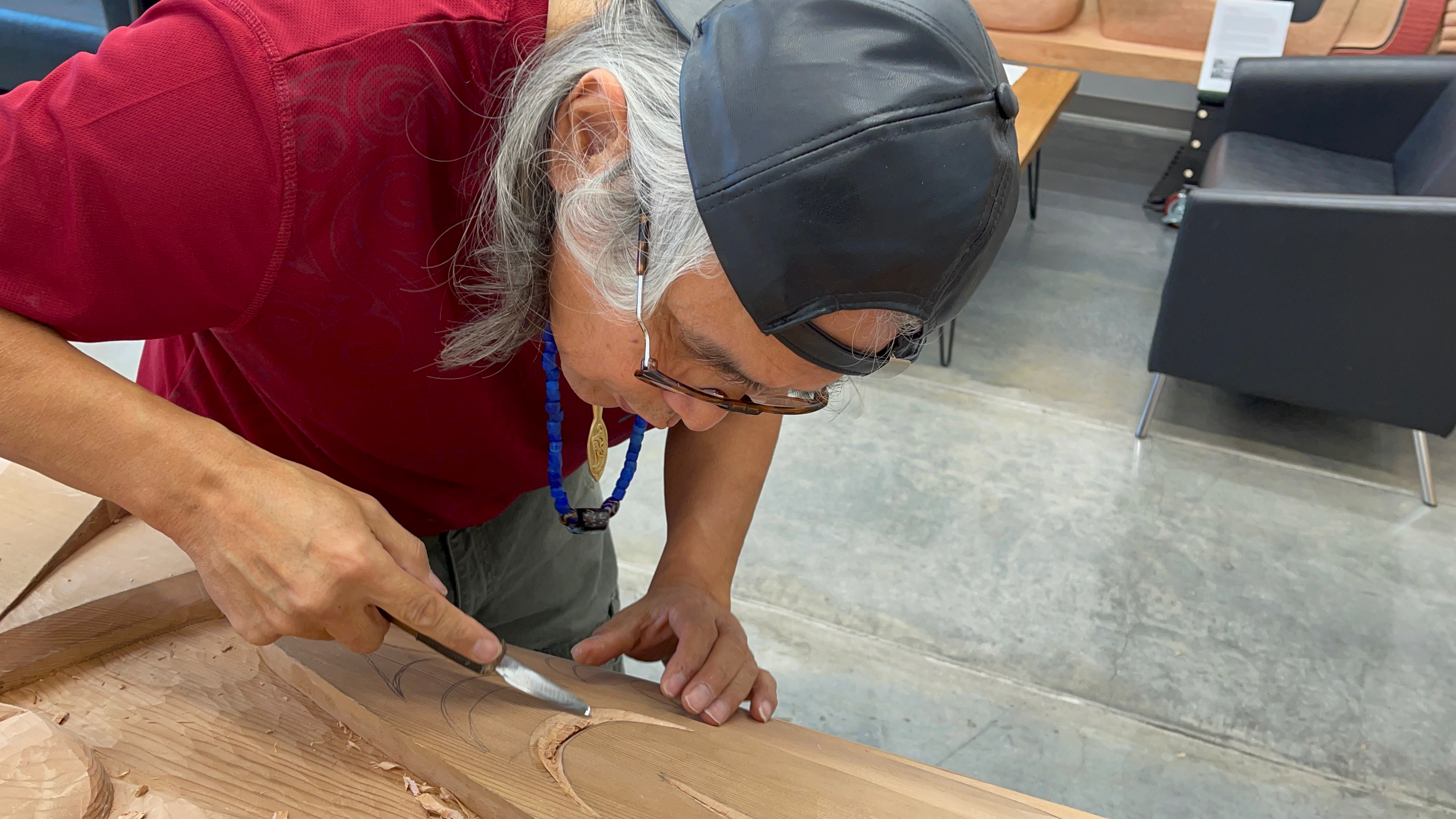
Xwalacktun at work on his house post in the Aboriginal Gathering Place. (Photo by/courtesy Connie Watts)
Posted on | Updated
The master carver and Order of British Columbia recipient has been working on the post for months at the Aboriginal Gathering Place with the help of Indigenous students.
Award-winning artist, educator and master carver (alumni 1982) was nearing completion on a house post, created in collaboration with Indigenous students at Emily Carr University, when he took a break on a winter Monday to talk about the project.
Xwalacktun, who is of Squamish and Kwakwakโwakw ancestry, has been working on the post in the since the summer. The design, he tells me, pays homage to the work of the late Chief Joe Mathias โ a revered carver, activist and community leader, born in the late 19th century.
โMy mother reminded me that when she was five years old, she used to look out the window and see him carving in this style,โ Xwalacktun says. โSheโs going to be 92 this year. So, this is quite a long while ago that this style was being carved. I took Chief Joe Mathiasโ forms, his designs, but I did it my own way.โ
Traditionally, house posts are structural, Xwalacktun says. Theyโre installed in a home to hold up a beam, for instance, and are carved with representations of that specific household. In the case of Xwalacktunโs current project, the finished post will eventually be installed on the staircase leading into the north atrium at ศซร๑ฒสฦฑ.
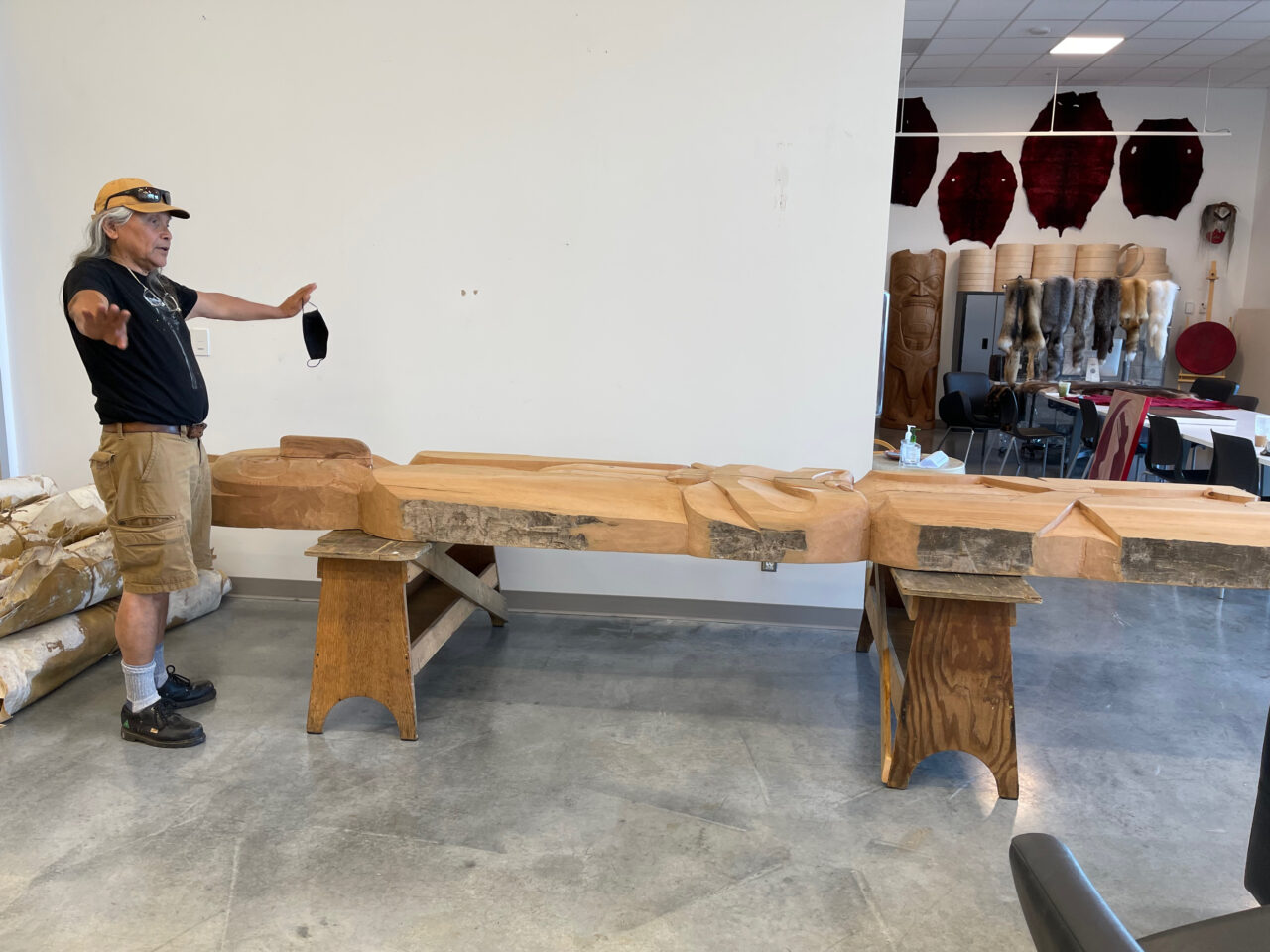
Xwalacktun explains his vision for the house post. (Photo by/courtesy Connie Watts)
As part of his work on the post, Xwalacktun apprenticed three Indigenous students. Other students stopped by at various points, likewise learning technique and history and contributing to the post itself by โtaking some wood off,โ as he puts it. For Xwalacktun, the role of mentorship is inseparable from the work of an artist โ or any other community member with knowledge to share. But using art as a tool to help younger generations feel connected to their history isnโt a new idea, he tells me.
โThat was the focus back in the day, too โ when things like this were done, they were used as a teaching tool,โ he says, adding that western conceptions of โartโ donโt quite ring true with how the Coast Salish viewed carving, painting and related forms. โWe didnโt have a word for art. It was something we did just like anything else, and there was always a reason for it while we made it. It wasnโt just something we did to make our place look beautiful.โ
Looking both to the past and to the future for inspiration has been an important theme for Xwalacktun throughout his career. He traces his focus on Coast Salish-specific design elements in the house post, for instance, to a Sacred Run across Canada in which he participated many years ago. Sacred Run were events started by Ojibwe civil rights leader, teacher and author Dennis Banks and Oglala Lakota civil rights leader, artist and writer Russell Means, both of whom famously helped lead the 1973 protest occupation of Wounded Knee, S.D.
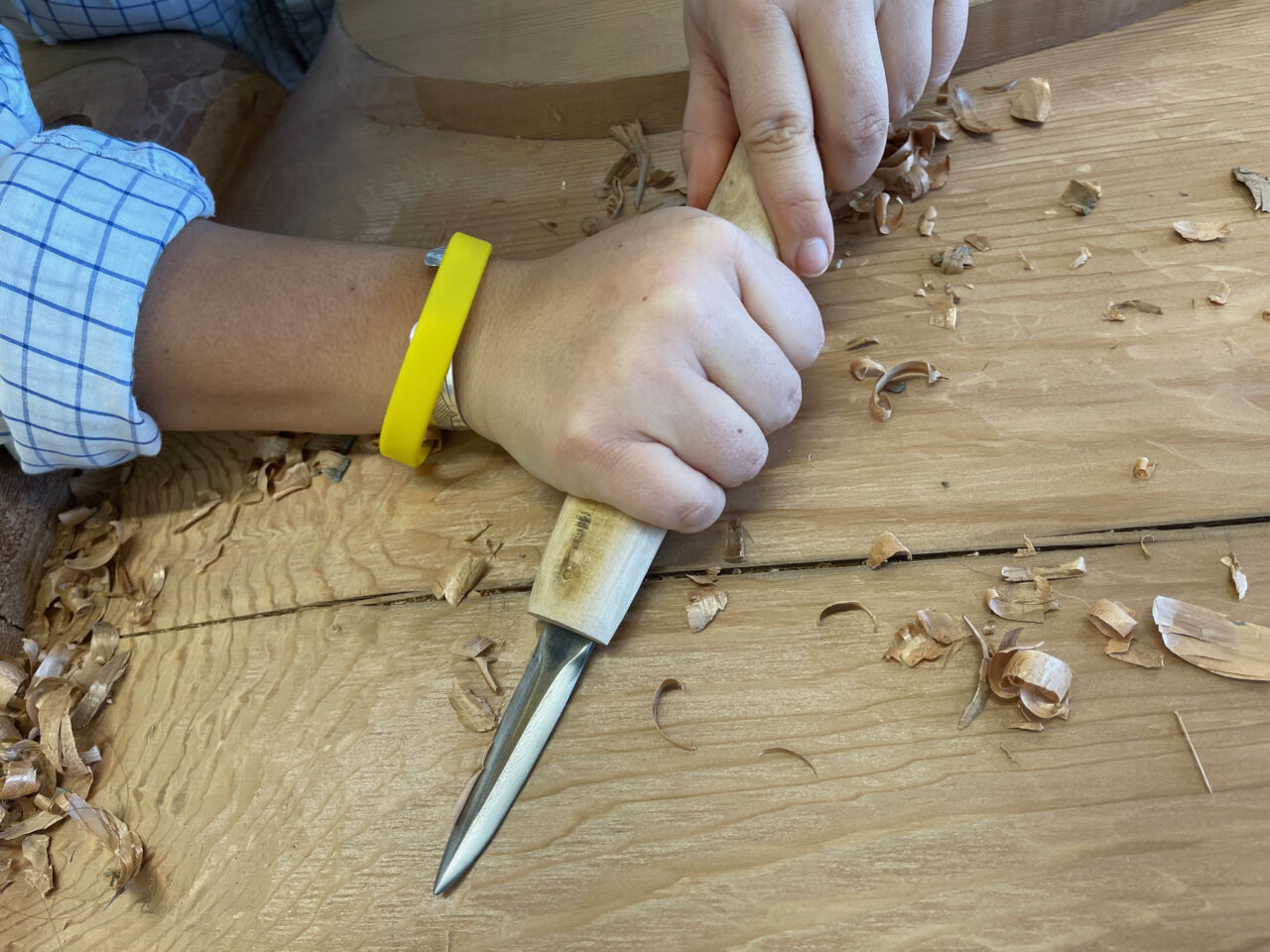
Student Hanna Stewart โtakes some wood off.โ (Photo by/courtesy Connie Watts)
โWhile I was on that journey, I saw Charles Elliottโs [Tโsartlip First Nation] work, what he had painted on an elementary school,โ Xwalacktun recalls. โI stood there and I looked at it and I said, โWow, I need to focus more on Coast Salish design.โโ
Having never forgotten that revelation, Xwalacktun points out the many ways his work continues to honour the Coast Salish tradition. The thunderbird at the top of the house post is a nod to Chief Mathias Joe, he says. Itโs also used by the Squamish Nation as one of their logos, and is a symbol of โsomething greater than us,โ something connected to the supernatural, he adds.
The four feathers are from an eagle. The number four represents the seasons, the cardinal directions, the elements and the lifeline (infant, youth, adult, elder), he tells me. The eagle feather itself, meanwhile, is an important and powerful symbol, indicating a creature that is closer to the creator than humans.
โIf an eagle was soaring above us in a circle, our belief was, โWow, we raise our hands. Give thanks. Because itโs creating this invisible eye for us to say something to the creator,โโ Xwalacktun says.
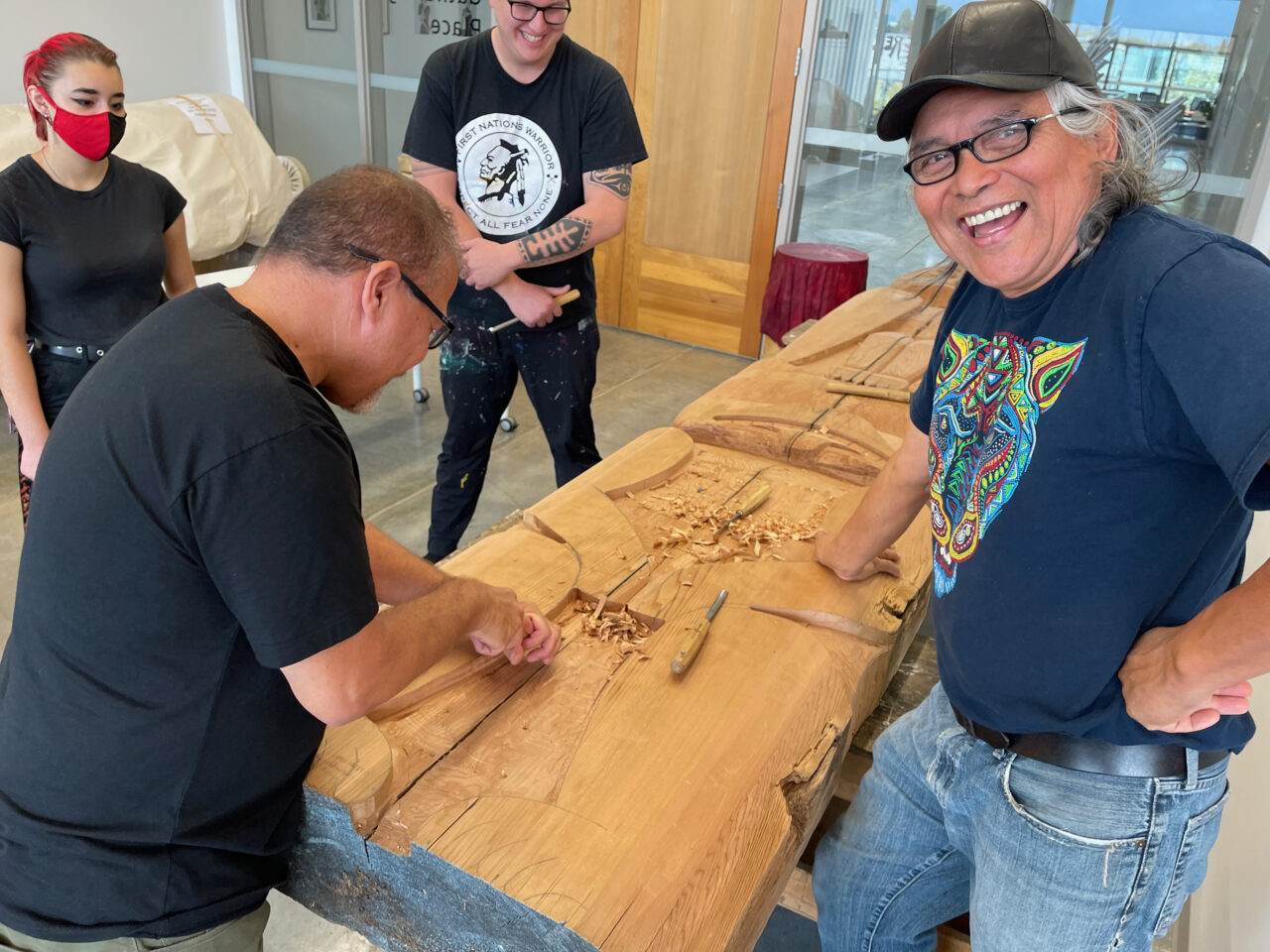
Xwalacktun works on the house post with students Aaron Rice, Jessey Tustin and Randall Barnetson in 2021. (Photo by/courtesy Connie Watts)
Beneath the thunderbird, the bear figure represents power, strength, nurturing and caring for the family. The crescents, meanwhile, represent mind, body and spirit, while the Salish eye symbolizes looking into the spirit world.
โA lot of Salish design is meant to remind us that weโre always being watched by the creator, ancestors, community, family, friends, our consciousness, ourselves,โ he continues.
โWhen I first came out of art school myself, I was making awesome work, but it didnโt have a backbone to it. Later on, when I changed my way of life, I started to focus on, โWhat is the reason why Iโm really doing this?โ I realized thereโs a lot more work to be done other than just what you see in the physical work. I have to also work on myself.โ
In other words, working on a practice is working on the self, he tells me. And committing to that work can help others, too.
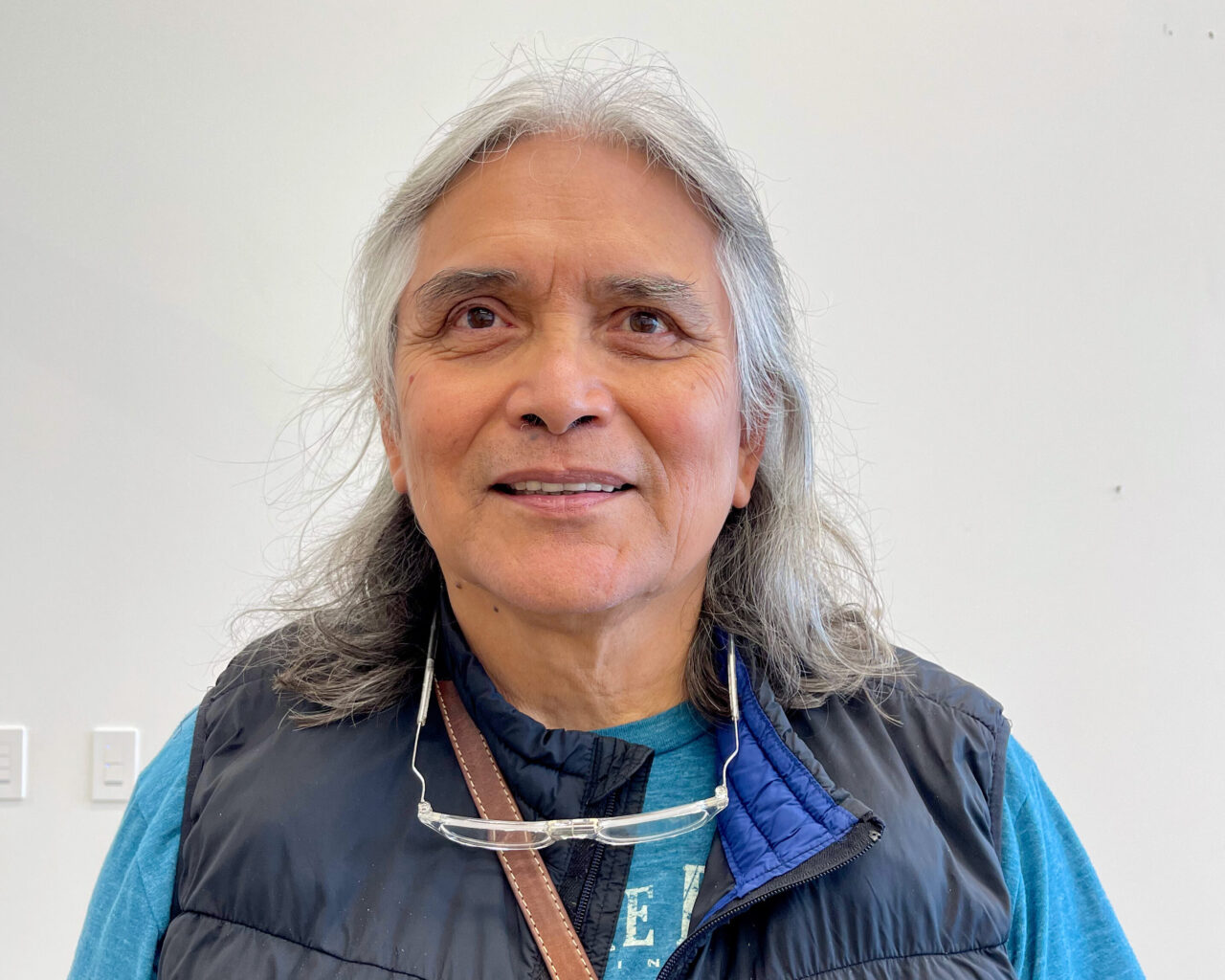
Xwalacktun in the AGP. (Photo by/courtesy Connie Watts)
Xwalacktun also made a point of acknowledging how the house post project is one way the university has worked at following the . The work of rebuilding what was destroyed by colonization will take a long time, he says. But remaining committed to that rebuilding is crucial for the creation of an equitable future.
โIt might take 150 years to rebuild it, but we have to continue doing it,โ he says. โSo, we raise our hands to the university for their work, and for taking on this project also. Weโre all in the same canoe, we always say. Mother Earth takes us on our life journey. We all have to work together, pull together, look after what we share, look after the earth so that the generations coming after us have something left.โ
You can learn more about Xwalacktunโs practice .
to find out about their extraordinary range of programming and resources.
